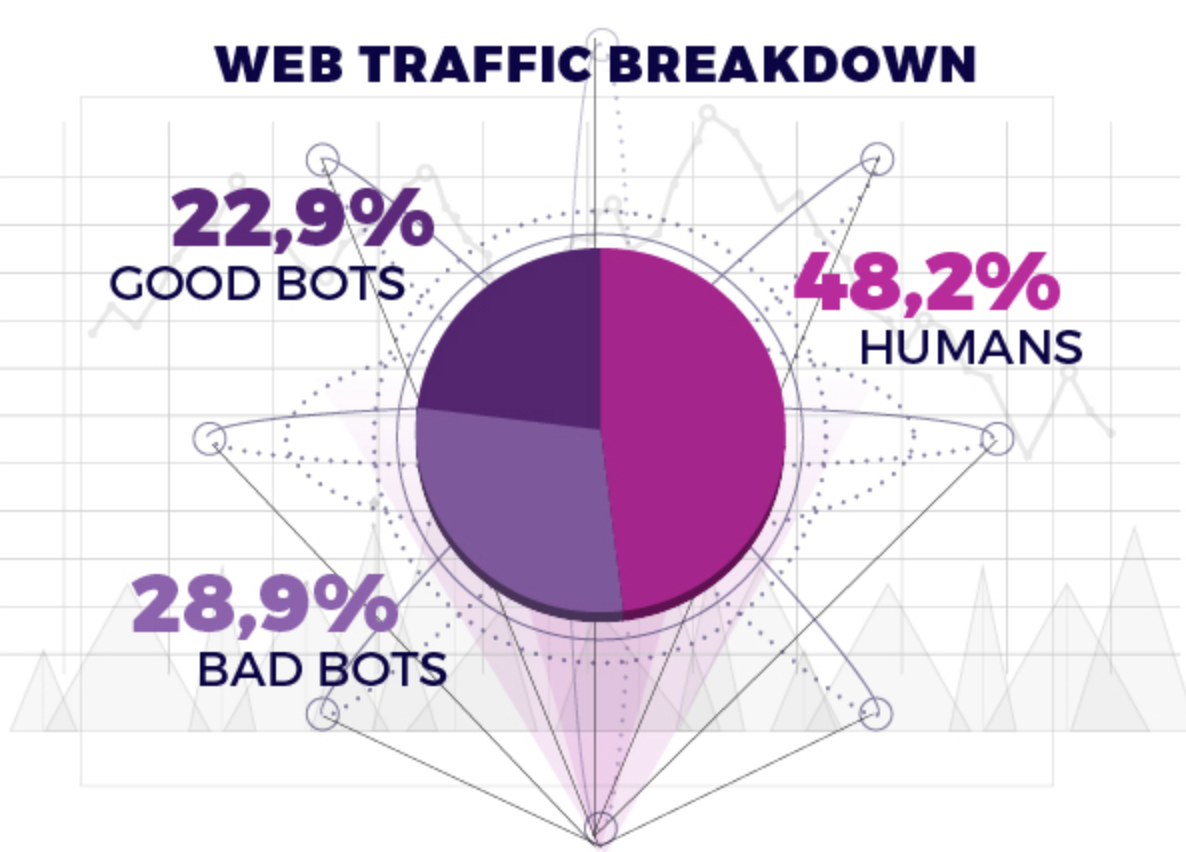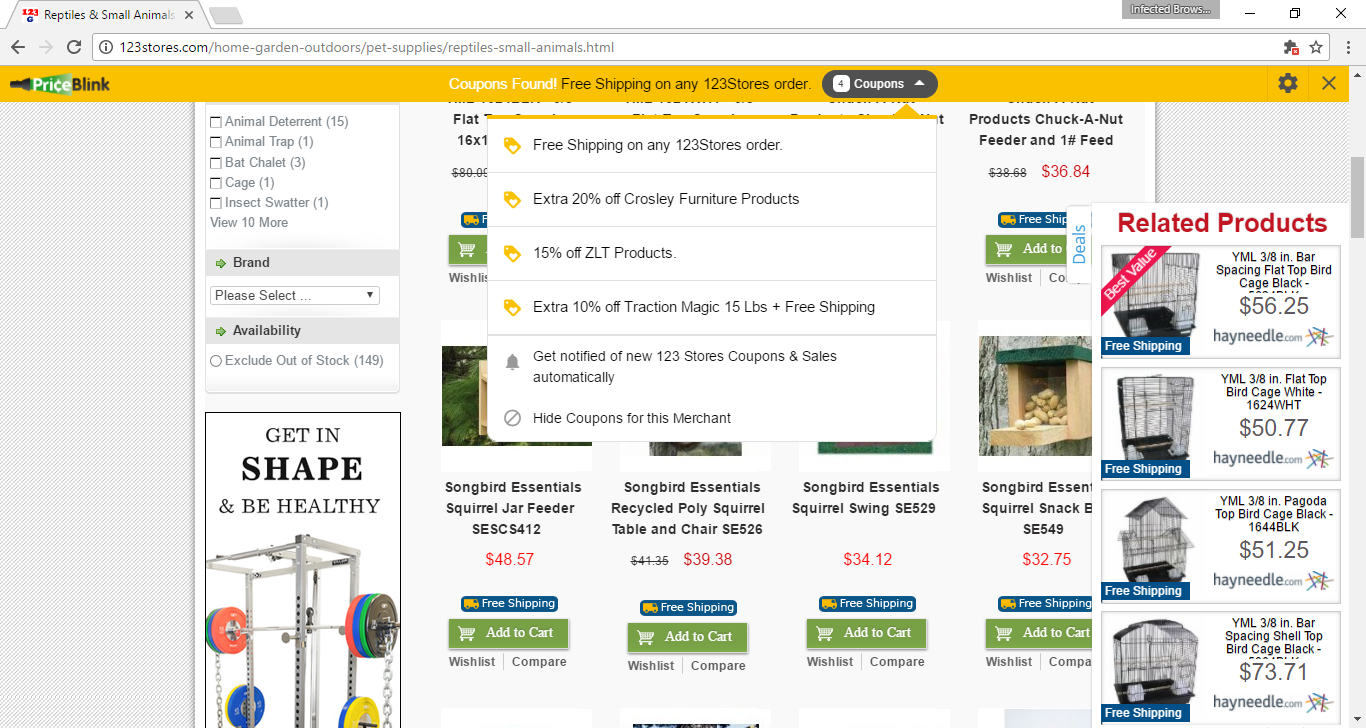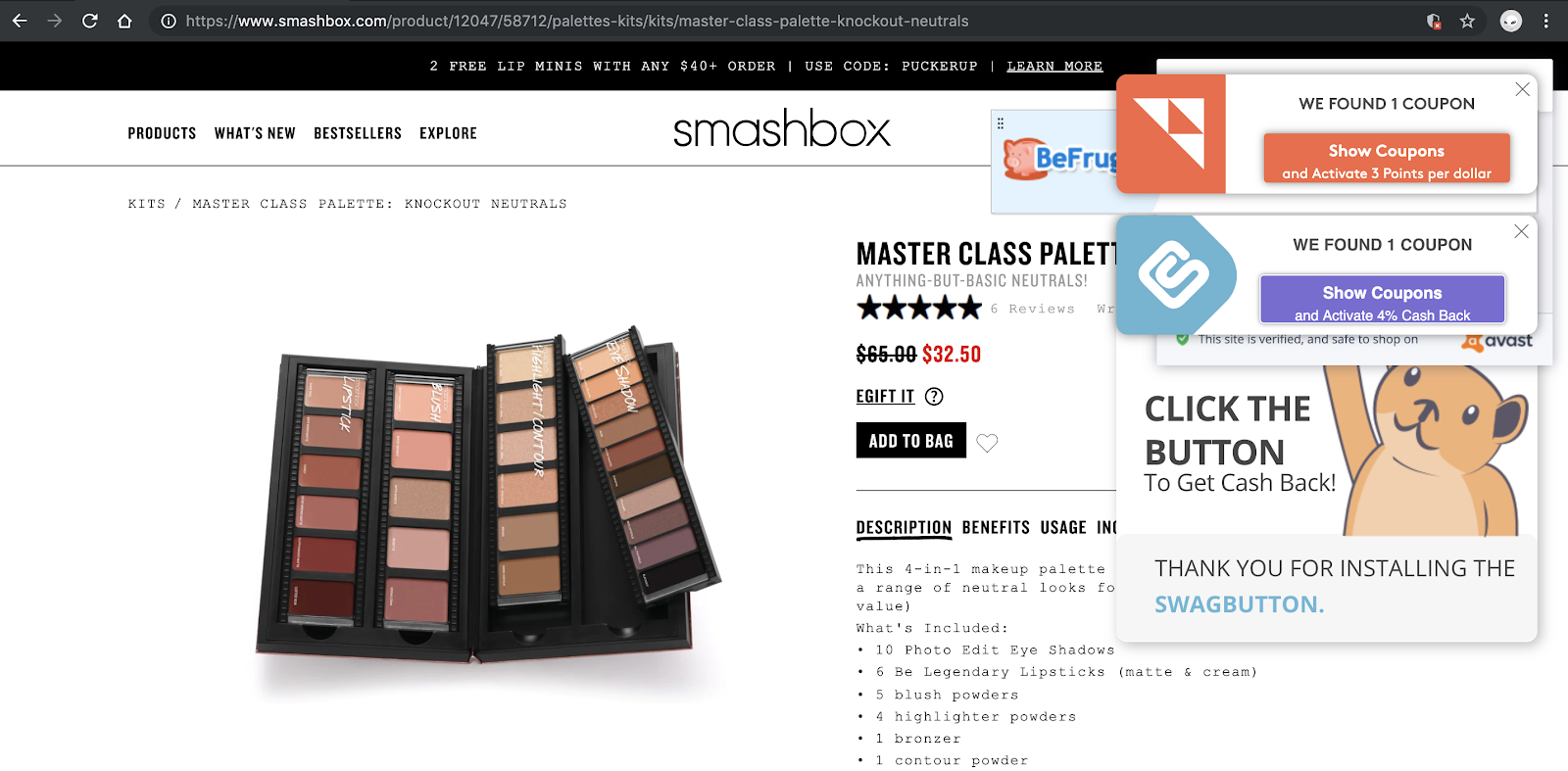A study published by Marketing Dive states that businesses lose up to $1.27 billion every year to ad fraud. With technology making it easier for people to take their brands online and access information about other businesses, and their customers, the number is only growing. In this article, we’re covering the five types of ad frauds that are not just making online stores lose sales worth billions but also tarnishing their brand names.
Ad fraud stealing your customers
1. Bots – The non-human traffic!
If you’ve been running an online business or even ads to acquire customers, you would have most certainly heard about bots. These are computer programs that mimic human interactions like clicking on your ad, liking your posts or even visiting your website.
So while your ad seems to be getting a lot of impressions, the reality is the stark opposite – you’re just being charged for traffic that isn’t a real shopper.
How big is this non-human traffic?
Well, studies suggest that a whopping 10% of your site traffic is actually fake.

2. Click farms – Clicks that don’t matter!
Set aside bots, sometimes there are actual humans who are clicking through your ads but they’re all not relevant to who you’re targeting.
These humans are low-paid workers who are tasked to simply click on ads. Now the clicks on these ads increase the CTR but all your money is actually going to fraudsters. This type of ad fraud is hard to identify as well because of the human interactions being more real.

How common is this ad fraud?
A report suggested that in some locations, 90% of the views on online video sites are actually fake.
The only way to avoid click farms is to dive into analytics and identify any abnormal activity on your site. Be it a product page that is being visited too much, a country that seems to be driving too much traffic suddenly or even your ad metrics skyrocketing suddenly.
3. Ad injection – Competitors on your site!
Imagine standing at a store browsing products and suddenly a brand barges in to promote their deals to you. That brand wouldn’t just be pushed out by the team of the one you’re standing in, but most likely it would be reported to the police for unauthorized behavior.
Ad injections are pretty much similar.
It refers to placing ads on your site without your permission through browser extensions and web apps on the consumer browser. These ads either overlay or replace the existing content on your site with ads from other sites.
Unauthorized ads usually include competitor deals, video ads, adult content and sometimes even spammy popups.

So while you’re keeping your online store secure at your end, your consumer’s browser becomes the weakest link. You start losing credibility and also your sales.
How common is ad injection?
Global brands like Nine West, Kirkland’s and Footwear etc. noticed that 11% of their traffic was seeing these ads.
And the only way they had to stop losing sales, is removing these ads before they even show up. This means you need to analyze over 12,000+ adware strains that are launched into the digital space every day.
Now that might sound like another challenge, but solutions like BrandLock actually stepped in to make this as easy as using one line of code for all the global brands mentioned above.
Want to know how they did it? Read it all here.
4. Domain spoofing – It’s not what it seems!
A very common form of ad fraud is domain spoofing. It is when a fraudster pretends to be a premium publisher who will help you reach a wider target market to acquire more customers. Now domain spoofing works in two ways. Either the fraudster uses malware and ad injections or modifies the ad tags.
How common is domain spoofing?
According to surveys, 63% of companies are targeted by at least one domain spoofing attack. And that one attack can cost them billions of dollars in sales.
The only solution, in this case, is going through ad verification ad tech companies. These are companies that work with publishers, advertisers, and exchanges while ensuring appropriate ad delivery and security.
5. Cookie stuffing – Too much is bad!
Cookies are what collect your store visitor’s IP, log in details, browsing and purchase behavior, and more. Now that might seem like a normal thing to your business, but what happens when multiple sites drop these cookies on the visitor’s browser without informing them?
That’s cookie stuffing and it’s commonly used by all coupon-selling publishers and affiliate sites.
A website that is stuffed with cookies will end up opening multiple tabs as soon as a shopper enters their URL on the browser. These tabs open web pages of other sites, pop-ups or even prompts to download unknown software.
How common is cookie stuffing?
Adotas reports that even though cookie stuffing is an old form of ad fraud, it is still commonly used by fraudsters.
The only way to stop this overdose of cookies is to set parameters that enable you to differentiate between normal and abnormal shopper behavior.
6. Affiliate fraud – Friends or not?
Affiliate marketing is one of the most commonly used tactics to grow online sales – no matter how big or small an online brand is.
While the idea of partnering with an affiliate is for them to bring you new customers, there are actually a few that flout the rules and only circle back visitors who were already on your site.
Confused?
Infected browser extensions and web app on the consumer browser can inject ads from cashback and affiliate sites on your store. These ads promote the coupons that you’re advertising on the affiliate site, luring the shoppers away to them. The shoppers then copy the coupon code from the site and come back to yours to complete a purchase.
So instead of sending you a new visitor, the affiliate just lured an existing one from your site and sent them back to make a purchase. And you basically ended up double paying your affiliates!

Ad fraud is common. But you are smarter!
With the digital landscape growing by the day, it’s difficult to completely remove ad fraud from the space. There are still going to be coupon sites, affiliates and publishers that continue to either flout the promotional rules or find ways to get into your site on the weakest link first – the consumer’s browser. And the losses are way more than you think!

Now you can’t control the browser extensions and web apps a consumer installs. You can’t even stop other sites from putting data to use the way they want to. But you can start by removing the possibility of ad frauds resulting from your own site; starting with removing distractions that are luring your shoppers away.
How? Let us show you.
Remove distractions and increase conversions with BrandLock.







